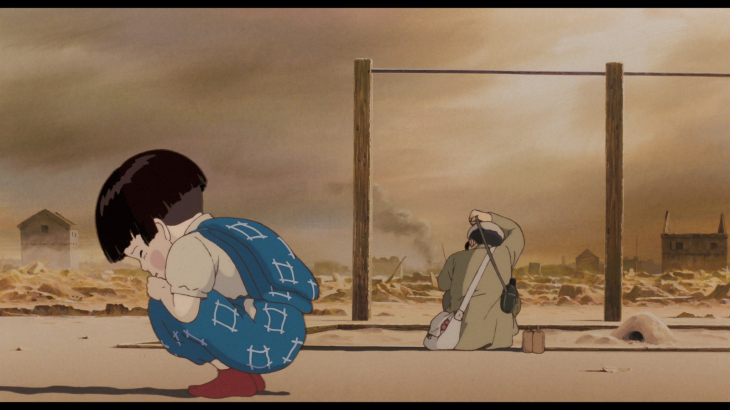To be fair to Isao Takahata, writer and director of Grave of the Fireflies, he doesn’t pretend he’ll be delivering a happy-go-lucky lighthearted anime to the audience. The title hardly screams cute, the poster smacks of grimness. Then there’s the opening scene, in which the voiceover declares that he dies.
The film tells the story of two children – Seita (Tsutomo Tatsumi) and Setsuko (Ayano Shiraisha) – who are struggling to stay alive in the final few months of World War II. Their mother has died in an American air raid and their father is a captain in the Imperial Japanese Navy, meaning they have to stay with their unsympathetic aunt. However, with the continued threat of airstrikes and a growing unease with their situation, the pair decide to fend for themselves.
When discussing this film with anyone who has been lucky enough to see it, you will invariably get the same response. “Grave of the Fireflies?” Then comes the deep intake of breath. Then comes the deeper exhaled sigh. “Grim. Great film, but really depressing.”

The film does not glamorise war in any way. It spends the entire running time delving into the relationship between the two siblings, the bond the war is creating and their resilience despite the tragedy surrounding them. The film gives an overwhelming sense of the individual impact of the war on the innocent people it affects. It doesn’t explicitly give a negative anti-war message, and it doesn’t attempt to portray the enemy (in this case the American Air Force) in a bad light. All these things are simply deduced by the fact that Setsuko and Seita’s story is so unbelievably sad.
The animation is absolutely stunning. It’s almost three decades since its release and its hard to think of a more realistic portrayal of Japan in animation. As the screenshot above shows, it is all greys and browns, though in this case Setsuko sits in the foreground in a blue ball attempting to protect herself of the reality of her mother’s fate. As Seita deals with it in his own way in the background, the effect is one of the most powerful images in the film. What else would two children do when their whole lives are turned upside down in such a catastrophic manner?
Since the release of this excellent film, Takahata has directed just four more animated feature films, all of which were released with Studio Ghibli: Only Yesterday, Pom Poko, My Neighbours The Yamadas and The Tale of Princess Kaguya. Whilst all of these are excellent films, none quite have the same impact as Grave of the Fireflies, a film that has stuck with me since the first time I saw it over a decade ago.


